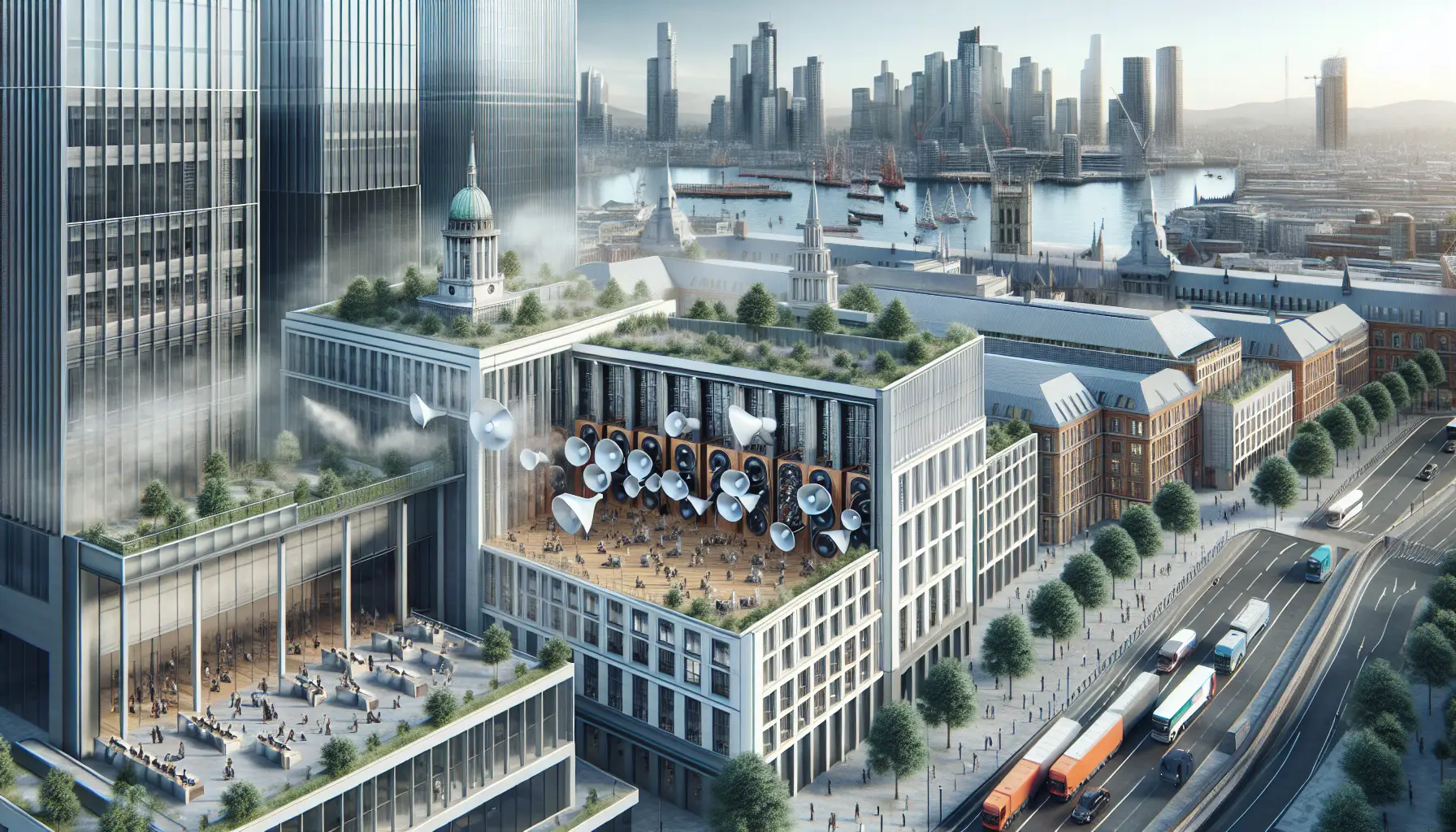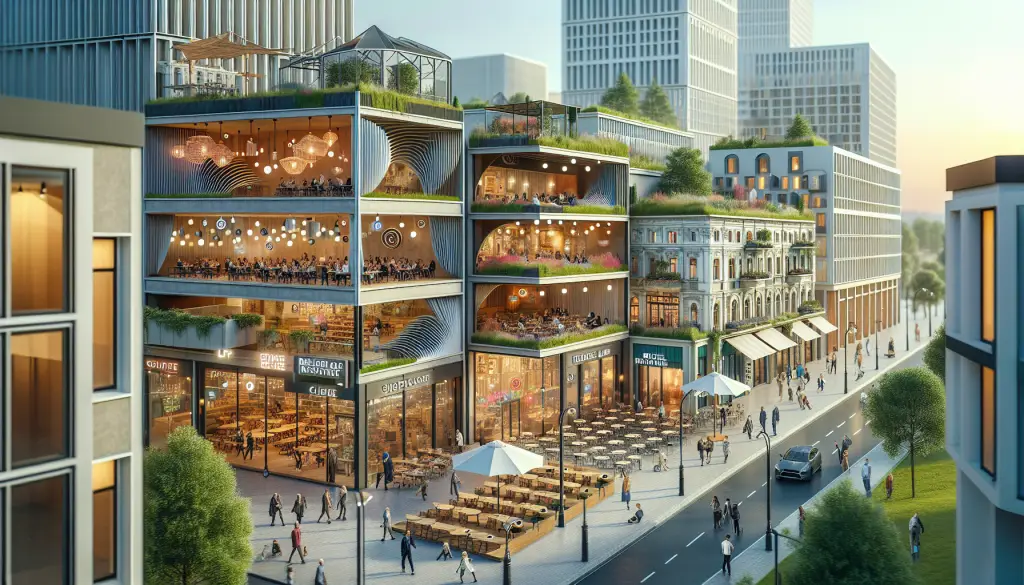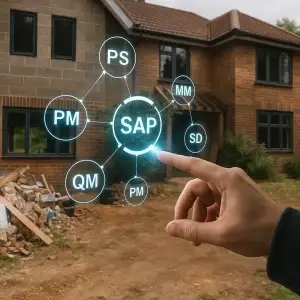The Importance of Managing Acoustics in Mixed-Use Urban Developments
In the realm of urban planning, mixed-use urban developments have become a preferred solution for efficient land use and vibrant community creation. However, these multi-functional zones present unique challenges, one of which is the need to manage acoustics effectively. At Ratio Seven, we understand the importance of balancing the diverse needs of commercial, residential, and recreational spaces within these urban ecosystems.
Challenges in Managing Acoustics in Mixed-Use Urban Developments
Mixed-use urban developments combine residential, commercial, and even industrial spaces, each with distinct acoustic requirements. The interaction between these different zones can lead to potential noise conflicts and disturbances. Below are the main challenges faced:
- Noise Pollution: Commercial areas are usually noisier, affecting the adjacent residential spaces.
- Sound Insulation: Ensuring different zones are insulated from each other’s noise.
- Acoustic Zoning: Creating designated acoustic zones to manage sound distribution.
- Structural Considerations: The architecture itself must support noise reduction strategies.
Understanding Acoustic Principles in Urban Development
Before implementing strategies, it’s crucial to understand the principles of acoustics in urban development. Key concepts include:
Sound Transmission
Sound travels through different media, and in an urban setting, it can penetrate walls, floors, and ceilings. Understanding how sound transmits allows for more effective space planning.
Sound Absorption
This involves using materials and design elements that absorb sound rather than reflect it, thus reducing overall noise levels within a given space.
Sound Insulation
Sound insulation aims to block unwanted noise from entering a space through walls, windows, and doors. Effective insulation is crucial for maintaining a balanced acoustic environment.
Effective Acoustic Management Strategies for Mixed-Use Urban Developments
At Ratio Seven, we employ a comprehensive set of acoustic management strategies that address the unique requirements of Mixed-Use Urban Developments.
Site Planning and Zoning
Strategically planning the site layout can help in mitigating noise conflicts. For instance:
- Buffer Zones: Establishing buffer zones between high-noise and low-noise areas.
- Acoustic Zoning: Designating specific areas based on their noise sensitivity.
Building Design
Incorporating acoustic considerations into the design phase is essential. This includes:
- Sound Insulating Materials: Using heavyweight partitions and double-glazing windows.
- Room Layout: Arranging rooms in a way that reduces noise transmission.
- Floating Floors: Employing floating floors to isolate sound.
Innovative Acoustic Technologies
Adopting modern technologies can significantly enhance acoustic management:
- Active Noise Control (ANC): Using systems that emit anti-noise frequencies to cancel out unwanted sounds.
- Acoustic Barriers: Implementing barriers that visually blend into the environment but provide superior sound insulation.
- Sound Masking Systems: Introducing ambient sound to mask intrusive noise.
Acoustic Materials for Mixed-Use Urban Developments
Choosing the right materials can make a significant difference in managing acoustics:
- Acoustic Panels: Panels that absorb sound, preventing echo and reducing noise levels.
- Carpets and Rugs: Soft materials that absorb sound and reduce noise transmission.
- Acoustic Ceilings: Ceilings designed to absorb sound and improve room acoustics.
Case Studies: Successful Acoustic Management in Mixed-Use Urban Developments
Let’s look at some real-world examples where effective acoustic management has been successfully implemented:
Case Study: Commercial-Residential Complex
Ratio Seven worked on a commercial-residential complex where noise from retail shops was affecting residents. Through strategic zoning, sound-insulating materials, and innovative technologies, we reduced noise levels by 60%.
Case Study: Urban Green Space Adjacent to Residential Area
In this project, noise from an adjoining green space disturbed nearby residents. We used acoustic barriers and sound-masking systems to create a harmonious balance, improving the quality of life for residents.

Ratio Seven’s Approach to Managing Acoustics in Mixed-Use Urban Developments
With years of expertise, Ratio Seven provides an integrated approach to managing acoustics in Mixed-Use Urban Developments:
Holistic Planning
We consider all aspects of urban development, from initial site planning to the final touches, ensuring acoustic comfort for all users.
Custom Solutions
Every project is unique. We customise our solutions based on the specific needs and challenges of each development.
Innovative Techniques
We stay updated with the latest in acoustic management technologies and materials, bringing you cutting-edge solutions.
Mixed-Use Urban Developments Summary
Managing acoustics in mixed-use urban developments is a complex but essential task that significantly impacts residents’ quality of life and commercial spaces’ functionality. At Ratio Seven, we provide comprehensive solutions that integrate planning, design, and innovative technologies to create harmonious urban environments. By addressing the unique acoustic challenges these mixed-use spaces present, we help foster vibrant, liveable communities.
FAQs
Why is acoustic management important in Mixed-Use Urban Developments?
Acoustic management is crucial in Mixed-Use Urban Developments to minimise noise pollution and enhance the quality of life for residents. Effective strategies ensure that commercial, residential, and recreational spaces can coexist harmoniously without disturbing one another.
What are the main challenges in managing acoustics in urban development?
The primary challenges include mitigating noise pollution, ensuring effective sound insulation between different areas, and incorporating structural design elements that support noise reduction. Each type of space—residential, commercial, and recreational—has unique acoustic requirements that must be balanced.
How does Ratio Seven approach acoustic management in Mixed-Use Urban Developments?
Ratio Seven adopts a holistic approach that includes strategic site planning, innovative building design, and the use of advanced acoustic materials and technologies. We customise our solutions to meet the specific needs of each development, ensuring optimal acoustic environments for all users.




